|
|
|
Sort Order |
|
|
|
Items / Page
|
|
|
|
|
|
|
| Srl | Item |
| 1 |
ID:
111718
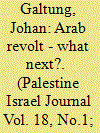

|
|
|
|
|
| Publication |
2012.
|
| Summary/Abstract |
It changes character, like in quantum mechanics, even as we watch. The French revolution did that in the late 1780s and early 1790s. But spring is gone, and revolt is in, so far not revolution. There are layers of rulers and layers of opposition. The unveiling has started.
If winter seeds from a suicide in Tunisia made buds sprout in early spring, then they must have fallen on fertile soil. Events make processes when "stability" is unstable, like the huge power and wealth gaps. The U.S. trick is to make people believe in individual mobility: "If you don't make it, it is your fault." Others see it as a relation: By taking power-wealth from us they got powerful-rich and we powerless and poor. The former is individualist and person-oriented; the latter collectivist and system-oriented. See it that way and revolts follow, like Tahrir Square, like Wall Street. But some resources are needed.
|
|
|
|
|
|
|
|
|
|
|
|
|
|
|
|
| 2 |
ID:
146710
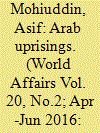

|
|
|
|
|
| Contents |
This article points out that the watershed events that initiated the period of contentious politics in the Arab world after 2010 not only reshaped regional and global politics but also challenged state power and long held theories dominant in the region, particularly about the popular acquiescence to regime control. They opened new areas of inquiry as well. By their impact on regional and international politics, these events have drawn the attention of scholars across the world. Some argue that these changes occurred as a result of the globalisation of democratic norms, new media technologies and regional structural changes, which led to widespread demonstrations, both violent and nonviolent. In calling for the downfall of the entrenched regimes, they signalled a breakdown of the social contract that had existed between the people and their rulers since independence.
|
|
|
|
|
|
|
|
|
|
|
|
|
|
|
|
| 3 |
ID:
029790
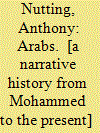

|
|
|
|
|
| Publication |
London, Hollis and Carter Ltd., 1964.
|
| Description |
424p.Hbk
|
|
|
|
|
|
|
|
|
|
|
|
Copies: C:1/I:0,R:0,Q:0
Circulation
| Accession# | Call# | Current Location | Status | Policy | Location |
| 000904 | 909.0974927/NUT 000904 | Main | On Shelf | General | |
|
|
|
|
| 4 |
ID:
152177
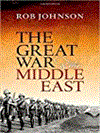

|
|
|
|
|
| Publication |
Oxford, Oxford University Press, 2016.
|
| Description |
xix, 354p.: ill., mapshbk
|
| Standard Number |
9780199683284
|
|
|
|
|
|
|
|
|
|
|
|
Copies: C:1/I:0,R:0,Q:0
Circulation
| Accession# | Call# | Current Location | Status | Policy | Location |
| 058995 | 956.02/JOH 058995 | Main | On Shelf | General | |
|
|
|
|
| 5 |
ID:
104272
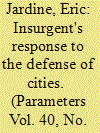

|
|
|
| 6 |
ID:
053804
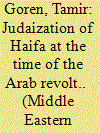

|
|
|
| 7 |
ID:
146711


|
|
|
|
|
| Contents |
Examining scholarly literature on the recent and ongoing changes in the Arab world, this article makes a comparative analysis of the conceptual definitions of social, political and non-political revolutions to draw certain themes and explains regional events in the light of various ideological and sociological theories. It concludes that most Arab states are trapped in the conundrum of authoritarian rule or chaos and remain hostages of the secular military or Islamist “deep state” oligarchies.
|
|
|
|
|
|
|
|
|
|
|
|
|
|
|
|
| 8 |
ID:
116259
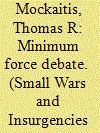

|
|
|
|
|
| Publication |
2012.
|
| Summary/Abstract |
No aspect of British counter-insurgency has been more problematic and controversial than the doctrine of minimum force. This common law principle provided ambiguous guidance for soldiers and police quelling unrest within a global empire and has become the subject of intense scholarly debate in the post-imperial era. The argument divides academics into two broad camps. One group sees minimum force as a vital element of a largely successful, uniquely British approach to counter-insurgency. The other claims that the legal principle never really restrained British security forces and considers the British approach to counter-insurgency neither unique nor particularly successful. This debate appeared in an exchange of views between John Newsinger and the current author in a 1990 volume of Small Wars and Insurgencies and more recently in a similar but lengthier argument between Rod Thornton and Huw Bennett in the same journal between 2007 and 2010.1
Such disagreements are of course endemic to academic discourse. This one, however, seems to be about more than history.
|
|
|
|
|
|
|
|
|
|
|
|
|
|
|
|
| 9 |
ID:
005809
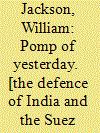

|
|
|
|
|
| Edition |
1st edn.
|
| Publication |
London, Brassey's, 1995.
|
| Description |
x, 262p.: mapshbk
|
| Standard Number |
185753008X
|
|
|
|
|
|
|
|
|
|
|
|
Copies: C:1/I:0,R:0,Q:0
Circulation
| Accession# | Call# | Current Location | Status | Policy | Location |
| 036638 | 954.03/JAC 036638 | Main | On Shelf | General | |
|
|
|
|
| 10 |
ID:
092308
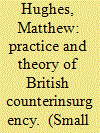

|
|
|
|
|
| Publication |
2009.
|
| Summary/Abstract |
This article details two largely unreported atrocities by British forces operating against Arab rebels during the Arab revolt, 1936-9, at the Palestinian villages of al-Bassa and Halhul. It then examines the military-legal system that underpinned and authorised British military forces operating in aid of the civil power, suggesting that the law in place at the time allowed for a level of reprisals and punitive actions, such as happened at al-Bassa and Halhul. The article does not conclude that the law allowed for atrocities but it does argue that it gave a basic form and understanding to an operational method that was brutal and could lead to atrocities. It thus tests the idea in much of the literature on counterinsurgency that the British were restrained and used minimum force when compared to other colonial and neo-colonial powers fighting insurgents.
|
|
|
|
|
|
|
|
|
|
|
|
|
|
|
|
| 11 |
ID:
177685
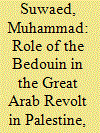

|
|
|
|
|
| Summary/Abstract |
This article focuses on the Bedouins’ part in the Great Arab Revolt in Palestine – during the time of the British mandate; what motivated some clans/tribes to join a given side, and why others chose to remain neutral – and it also refers to the later implications of these different choices. The article briefly overviews the social and political developments that led to the Revolt, explains the unique status of the Bedouin within the Arabic-speaking population in the area, and describes the internal diversity among Bedouin groups and the different alliances they made with the British Mandatory authorities and with other segments of the population.
|
|
|
|
|
|
|
|
|
|
|
|
|
|
|
|
| 12 |
ID:
116253
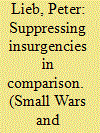

|
|
|
|
|
| Publication |
2012.
|
| Summary/Abstract |
In recent years two theories have emerged in academia with regards to 'small wars': A 'German way of war' and a 'British way of war'. The first one believes in a specific German military culture until 1945 accepting mass violence against civilians to quell any form of civil unrest. The second theory stresses a moderate British approach during the twentieth century; in defeating insurgencies the British Army had applied 'minimum force'. This article challenges both views by looking into two largely forgotten counter-insurgency campaigns by the end of the First World War: The Germans in the Ukraine in 1918 and the British in Mesopotamia in 1920. It will be argued that one cannot speak in general terms about a ruthless German and a moderate British approach during this period - in fact it was quite the contrary in some ways.
|
|
|
|
|
|
|
|
|
|
|
|
|
|
|
|
| 13 |
ID:
104119
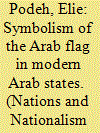

|
|
|
|
|
| Publication |
2011.
|
| Summary/Abstract |
The national flag, anthem and emblem are the three symbols through which an independent country proclaims its identity and sovereignty. Although each state has its distinctive flag, there are similarities in the flags of certain countries, such as in Scandinavia (the cross) and Africa (colours). These symbolise certain propinquity in terms of ideology, culture and history. Similarity is also to be found in the flags of the Arab countries: out of the twenty-two current members of the Arab League, ten share the same colours on their flags (green, white, black and red), while a certain Islamic symbol (eagle, star) in some flags represents the uniqueness of that country. Of the other twelve countries, most rely on one colour of the four (usually red or green) while nine use Islamic symbols (stars, crescent and sword) on their flags. In spite of the importance of this national symbol, the study of the modern Arab flag is almost non-existent. This article explores the modern evolution of the Arab flag and the reasons for the similarities in many Arab flags. In particular, it will deal with the pan-Arab flags of the Hashemites Kingdom of the Hijaz (1916-26), Jordan, Iraq, Palestine, Syria and Egypt.
|
|
|
|
|
|
|
|
|
|
|
|
|
|
|
|
| 14 |
ID:
139655
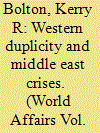

|
|
|
|
|
| Summary/Abstract |
Kerry R Bolton contends that the present so-called “conflict of civilisations”, a concept promoted by neoconservatives to lend historic inevitability to the tumult among Muslims, the contrived “war on terrorism” and the Arab–Israeli conflict, has its origins in the diplomatic machinations of the Great War.
|
|
|
|
|
|
|
|
|
|
|
|
|
|
|
|
|
|
|
|
|